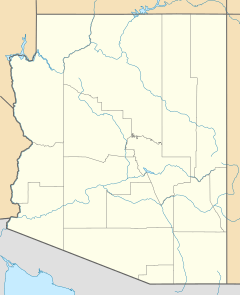Madera Canyon, Arizona facts for kids
Quick facts for kids
Madera Canyon, Arizona
|
|
|---|---|
| Country | United States |
| State | Arizona |
| County | Santa Cruz |
| Elevation | 4,911 ft (1,497 m) |
| Time zone | UTC-7 (Mountain (MST)) |
| • Summer (DST) | UTC-7 (MST) |
| Area code(s) | 520 |
| FIPS code | 04-43710 |
| GNIS feature ID | 36713 |
Madera Canyon is a beautiful natural area in the Santa Rita Mountains of Arizona. It's located in Santa Cruz County. This canyon is part of the Coronado National Forest.
Madera Canyon used to have homes and buildings. But over time, the land was changed to focus on nature and public use. Today, it's known for its amazing outdoor activities.
Contents
History of Madera Canyon
Madera Canyon has an interesting past. For a long time, people have enjoyed its cool temperatures and scenic views.
Early Development
Around 1911, a businessman from Tucson and his supporters built cabins in the canyon. They leased the land from the United States Forest Service (USFS). As roads got better and cars became common, Madera Canyon grew into a popular summer getaway.
The USFS even encouraged building summer cabins. This was under a law called the 1915 Occupancy Permits Act. In 1922, the Santa Rita Trails Resort was built. The first lodge burned down, but a new one was built in 1929. This new resort was open all year. It had cottages, cabins, a restaurant, a general store, a gas station, and even a post office.
The Civilian Conservation Corps
In the 1930s, Madera Canyon was home to a camp for the Civilian Conservation Corps (CCC). The CCC was a program during the Great Depression. Young men worked on conservation projects. Many of the strong rock walls they built are still there today.
Changes for Public Use
The USFS kept improving roads and utilities in the canyon. However, by the 1960s, they stopped giving out new building permits. Some private summer cabins had become homes where people lived all year. Many of these were retirees.
There were worries that too many homes were causing problems. These included erosion, sewage issues, and water supply challenges. Even picnic areas that weren't well-maintained were seen as a source of pollution.
In the 1970s, the USFS decided to change its focus. They wanted to make the canyon more for public use. This meant "re-wilding" the area. The goal was to create more space for camping and hiking.
Between 1984 and 1991, over fifty private cabins on public land were removed. This made way for improved campgrounds and trails. Today, only a few homes remain in Madera Canyon. These are located on private land.



